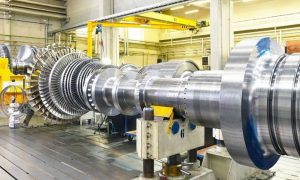Commercial property investments are a sure way to unlock the potential for consistent income, appreciation over time, and positioning in the Australian real estate market. They assure just that-an opportunity to achieve financial security and long-term growth.
Below is an inspection of the average return on commercial property in Australia, covering the main things one wants to know: how it compares to other investment avenues, what is the influence of economic factors on such returns, and how to maximise your return? This will also be an important read for any investor, old or new, in the arena.
The Australian real estate market stands out as one of the best in the world, founded on a strong economy, increasing urbanisation, and constant demand. Commercial real estate remains one of the favourable avenues due to yields that outperform residential property more often, hence assuring strong and predictable returns.
Understanding Commercial Property Returns: What Investors Need to Know
What Are Commercial Property Returns?
Returns on commercial properties are derived from two major sources:
- Rental Yields: An individual’s annual income is the rent gained over the property value.
- Capital Appreciation: Appreciation of property value over a certain period provides wealth accumulation in the long term.
Why Invest in Commercial Properties and not Residential?
- Yields: Commercial yields range from 5% to 7%, and residential yields from 2% to 4%.
- Longer Leases: Tenancies are long-term because usually the tenant takes a multi-year lease that can give one long-term, stable income stream.
- Tenant Responsibilities: Usually, the tenant pays for most of the outgoings such as maintenance and utilities, so it cuts a lot of overhead from the landlord.
What is the Average Return on Commercial Property in Australia?
Latest Statistics: Healthy Rental Yields in All Sectors
At present, the average return on commercial properties in Australia has different yields depending on the sector and location, but generally falls between 5% and 7%.
Sector Breakdown: Which Sectors Provide the Best Returns?
- Office Spaces: Prime office spaces in cities like Sydney and Melbourne offer stable yields, especially in the most popular business precincts.
- Retail Properties: Returns are associated with foot traffic and consumer trends, while the very best retail space in urban centres has done fantastically.
- Industrial Facilities: Logistics and warehousing properties have become hugely lucrative in light of e-commerce growth; occasionally, yields of greater than 7% are realised.
Regional Difference in Return
- Major cities: These have stable but relatively lower returns from places such as Sydney, Melbourne, Brisbane. Due to high prices in real estates.
- Regional: Although the property is riskier, regional generally offer a higher yield, particularly on industrial and retail.
Historical Trends
Commercial Property returns have, by and large, stayed flat over the past ten years, although there has been a considerable gain in the Industrial Property industry regarding growing retail online.
Factors Affecting the Average Return on Commercial Properties
1. Location is Everything
Properties located in the centre of a city business district or along transportation lines command high rental rates and are always in demand.
2. Property Type and Condition
Properties that are either new or have been better-maintained attract better tenants and save in long-term maintenance costs.
3. Market Dynamics
Interest rates, economic growth, and industry trends are other variables which impact property demand and rental income.
4. Tenant Quality
A good tenant on a long-term lease translates to no risk of vacancy along with assured regular income.
Risks and Challenges of Commercial Property Investments
1. Vacancy Rates
The vacancy period, common in commercial properties, if not managed correctly, will gnaw at the returns.
2. Economic Downturns
If there is an economic downturn, businesses scale down or close. The demand for those kinds of commercial spaces automatically decreases.
3. Regulatory Costs
After all, there will always be a cost involved with adherence to building codes, fire safety regulations, and other legal requirements.
Maximising Your Returns on Commercial Properties: Tips
1. Do Extensive Market Research
Know the local market trends, demand-supply dynamics, and areas of growth potential before investment.
2. Diversification of Portfolio
Spread investments over a variety of property types in different locations to reduce risk.
3. Professional Property Management
A property manager will ensure efficiency in maintenance, relations with tenants, and also legal requirements.
4. Adaptation to Market Trends
Pay heed to the change in industry trends-be it coworking office space becoming the new hype or people looking towards going green with their buildings.
The Future of Commercial Property Returns in Australia
Emerging Trends
- Sustainability: Green-certified buildings are in demand.
- Flexible Workspaces: Coworking spaces have a different proposition amidst rising hybrid working models.
- E-Commerce Growth: As far as industrial properties are concerned, this segment will see a boom in the case of warehouses.
Investor Opportunities
High-growth areas and sectors, such as logistics and urban retail, continue to present opportunities for investors to realise the average return or better.
Expert Predictions
As can be seen, analysts are predicting further stability of the commercial property market and the likely solid growth of the main sectors over the decade.
As such, the average yield commercial property in Australia can still maintain an exceptionally attractive feature in general for the investor. Taken in combination, these yields against 5% to 7% plus returns may include longer lease terms and probable capital growth-therein lie very attractive representations for portfolio diversification.
Find out more today about commercial property opportunities and maximising your return from Average Return.






More Stories
Best Ways to Use Shipping Containers for Residential and Commercial Projects in Montana
Why Do Power Plants Still Use Steam Turbines?
Risk Management Strategies for Every Trader